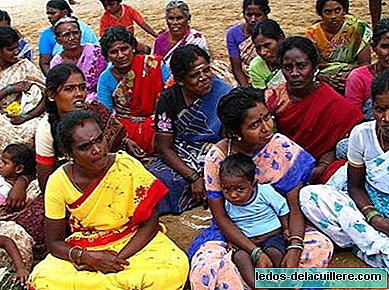
In our environment where we feel relatively well-off, we often forget other realities that should not be forgotten. The figures of maternal mortality in the world they are alarming in developed countries, and the worst (or the best, as you see) is that with an affordable effort they could be changed.
In recent years there have been considerable efforts and significant achievements have been made in reducing maternal mortality in the world, but there is still work to be done if one of the Millennium goals is to be achieved. Let's see what is the situation of mothers in the world, in figures.
Every day about 800 women die from preventable causes related to pregnancy and childbirth.
In 2010, 287,000 women died during or after pregnancy and childbirth.
99% of maternal mortality corresponds to developing countries: more than half to sub-Saharan Africa and almost a third to South Asia.
More than half of the maternal deaths in 2008 occurred in six countries: India, Nigeria, Pakistan, Afghanistan, Ethiopia and the Democratic Republic of the Congo.
In sub-Saharan Africa, the maternal mortality ratio in 2008 exceeds 280 deaths per 100,000 births (in Spain it stood at 7 that same year).
The average maternal mortality ratio in 2010 in developing countries is 240 per 100,000 live births, while in developed countries it is only 16 per 100,000.
The highest risk of maternal mortality corresponds to the teenagers under 15.
The risk of death related to maternity throughout life (that is, the probability that a 15-year-old woman ends up dying from a maternal cause) is 1 in 3800 in developed countries and 1 in 150 in those developing countries.
The main complications, causing 80% of maternal deaths, are: severe bleeding (mostly after childbirth); infections (usually after delivery); gestational hypertension (preeclampsia and eclampsia); Dangerous abortions
The remaining 20% of maternal deaths are associated with diseases such as malaria, or HIV infection in pregnancy.
Maternal and newborn health are closely related. Every year more than 3 million newborns die, and another 2.6 million die before birth.
Finally, a hopeful figure that indicates that the future is possibly better: world maternal mortality has been reduced by almost half between 1990 and 2010. According to a study by The Lancet, the 2008 figures represent a 40% reduction in Maternal mortality ratio since 1980. Today we can say, as noted by WHO, that since 1990 maternal mortality has decreased by 47%.
Other data to consider are that maternal mortality is higher in rural areas and in the poorest communities and that young adolescents are at greater risk of complications and death as a result of pregnancy.
All these figures and data remind us that one of the Millennium Goals, to be met by 2015, is “Reduce by three quarters, between 1990 and 2015, maternal mortality”.
We have often commented on the blog that specialized care before, during and after childbirth can save the lives of pregnant women and newborns. Therefore, an investment in training (midwives, doctors ...) and infrastructure that improve health and reproductive care are essential for maternal mortality figures in the world keep going down.












